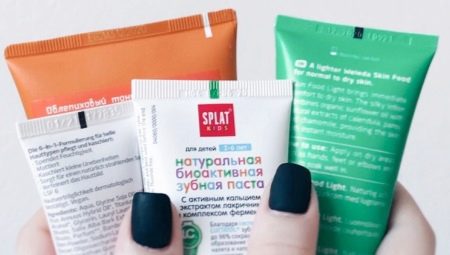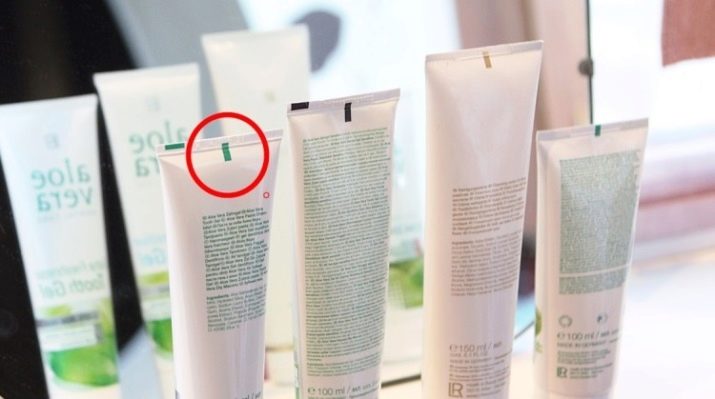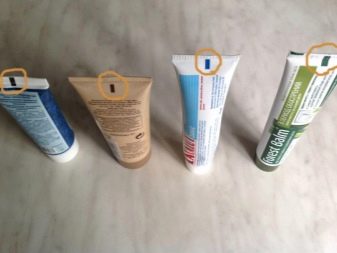What do the stripes on the toothpaste mean?

The multicolored stripes and squares located on the seams of the toothpaste tubes arouse well-founded curiosity among many consumers. Many myths and assumptions are associated with this unusual labeling, which have nothing to do with the truth. Are the marks on the welded seams of the paste tubes decipherable? Why are they made colored? Should I choose a paste based on this marking?
Popular myths and hypotheses
The lack of information explaining the origin and meaning of the markings on the seams of toothpastes has given rise to many myths and hypotheses among consumers. Some users associate this marking with the peculiarities of the composition of the toothpaste, others - with its properties. There are also those who believe that the multicolored stripes and squares on the tubes indicate certain countries, for the population of which the composition of a particular toothpaste was developed. Below are the most popular versions that are widely adopted in the consumer environment.

Composition
One of the most common myths associates the colors of the stripes and squares on the seams of the tubes with the peculiarities of the composition of the toothpaste. According to this version, the marker green the colors located on the seam of the tube indicate that the product contains exclusively natural, hypoallergenic and environmentally friendly ingredients. Such a paste, according to this myth, is allowed to be used every day on a regular basis.
Red the marker, in turn, allegedly indicates that the composition contains components hazardous to health, so you should not use such products on an ongoing basis. Stripes and squares blue colors, in turn, signal (allegedly) the presence of synthetic ingredients in the paste in the maximum permissible concentration. Such products, according to this version, should be used with caution.
Black the same marker, according to this myth, indicates a high content of extremely dangerous and even toxic components in the paste that can cause severe diseases of the oral cavity and damage to tooth enamel. It is categorically impossible to brush your teeth with such a paste.
According to the myth under consideration, the percentage of harmful and hazardous components in the composition of pastes with markers of different colors is:
- green marker - 0% (contains only natural ingredients: plant extracts, oils);
- red - 50%;
- blue - 80%;
- black - over 80%.
Another popular hypothesis associates the color of the marking with the presence of petroleum products in the composition of the product. So, according to this myth, the largest amount of petroleum products is found in toothpastes with a black marker on the tube. The insignificant content of petroleum products in the composition, in turn, is indicated by blue and red markers. The green mark on the seam of the tube indicates that the product does not include oil products and other toxic ingredients (the product is environmentally friendly and completely safe).


Duration of use
Another common myth connects the color of the markings on the seams of the tubes with the recommended duration of use of the paste. So, according to this myth, black mark paste should be used no more than 1-2 times a week. With more frequent use of such a paste, the active ingredients that make up its composition can damage the enamel of the teeth and cause inflammation of the gums and oral mucosa.
Pastes with blue and red markers, according to this version, are allowed to be used more often - about 2-3 times a week. For daily use, a paste with a green marker is best suited, which (supposedly) means that this product provides the most delicate and gentle brushing of teeth.
Another popular myth should be mentioned here, linking the color of markers with the frequency of use of the paste. According to this myth, pastes with a green marker are allowed to be used daily, but no longer than 30 days, with red - no more than 7 days. Pastes with a blue marker, in turn, are allowed to be applied every day for an unlimited amount of time.
Products with a black mark on the tube, following this version, are recommended to be used extremely rarely (allegedly due to a powerful whitening effect).


Presence of dyes
Some users are convinced that the color of the markings on the tube indicates the level of dyes and other chemical components in the toothpaste. According to this popular myth, the highest amount of colorants and unsafe chemical ingredients that can cause allergies are found in paste, which has a black mark. Blue and red markers allegedly also indicate the presence of dyes and chemical components in the composition of the product, but in an acceptable and safe concentration for health.
The toothpaste, which has a green seal on the weld, is free of any dyes or harsh chemical ingredients according to this version. It should be noted that many experts associate the origin of this myth with a clever marketing ploy, which made it possible to increase the sales of pastes with a green label, which many consumers associate with natural and safe components in the composition of the product.

Abrasiveness
The quality of cleaning teeth and gums from plaque directly depends on the degree of abrasiveness of the paste. Abrasives are small solid particles that make up the paste, which not only remove plaque, but also polish the tooth enamel. If the abrasives are coarse, the cleaning performance is reduced and the likelihood of damage to the enamel increases. For this reason, pastes with a high degree of abrasiveness are not recommended to be used on a permanent basis.
So, according to another popular myth, the highest degree of abrasiveness is possessed by the paste, which has a black mark on the seam of the tube. Long-term use of this product can cause serious damage to the tooth enamel, so this paste (within the framework of this myth) should not be used by children and those with sensitive teeth. The average degree of abrasiveness, in turn, belongs to pastes with blue and red markers.
According to this myth, pastes with a green stripe (square) on the tube seam have the lowest degree of abrasiveness.


Territorial classification
One of the most absurd myths explains the color of the marker on the tuba by "territorial classification". According to this version, toothpastes that have markers of different colors on the tube also differ in their composition, the recipe of which is (allegedly) developed taking into account certain factors in the life of the population of a particular geographic zone. So, toothpastes with black markings are intended for poor Asian and third world countries, with blue markings for the United States, with green and red ones for European countries.


What is the labeling for?
The design of tubes with toothpaste is carried out in accordance with the requirements established by three GOSTs. In accordance with them, the product name, trade mark and brand must be applied to the packaging of the product. In addition, the tube should indicate the volume and composition of the product, the permissible shelf life and expiration date. However, none of the regulatory documents governing the conditions for the design of tubes contains a requirement for the marking of the type in question (in the form of colored stripes or squares on the seam of the tube).
To understand why and how the markings are put in the form of colored stripes and squares on the seam of the tubes, one should turn to the intricacies of their production. Bypassing the technological nuances, the entire production process can be represented by the following main stages:
- a polyethylene or laminate web (with already applied markings in the form of stripes or squares) moves along the conveyor and enters the device that gives it the shape of a tube;
- the one-piece "tube" moves further and passes through the apparatus, dividing it into separate fragments of a certain length.
Initially, the marking applied to the canvas acts as a clear reference point for robotic equipment, indicating the place of the cut and subsequent sealing of the seam of the future tube. Thus, markings in the form of colored stripes or squares are applied exclusively for production purposes. For the end consumer, they do not carry any information.
To be convinced of this, it is enough to examine the available cosmetic and hygiene products packed in tubes - they will all have exactly the same multi-colored markings on their seams.


Why are the stripes colored?
Modern equipment used in the production of tubes for toothpaste is high-tech and ultra-precise, but its ability to recognize colors and shades is still not very perfect. These smart devices are able to detect a very limited spectrum of black, red, blue and green colors. In this case, the optical sensors of the equipment are able to determine the color mark if it is placed against a contrasting background.
So, the marks of the indicated colors are usually applied to tube blanks of light shades - most often white, less often - yellow, light orange. It is noteworthy that, on the contrary, light markings are applied to the blanks for dark tubes, contrasting with the main color of the package. If, for example, black marking is applied to a dark (blue, green) tube, the optical sensors will not be able to recognize it and, as a result, will not be able to determine the exact location of the cut and seal of the tube seam.


Should I choose the paste by the color of the square?
To choose the right toothpaste, do not take the colored marker located on the tube seam as the main reference point. As it has already become clear, this detail of packaging design has nothing to do with either the composition of the product, or its properties and quality. You can choose the right toothpaste yourself, taking into account the following basic criteria:
- composition;
- degree of abrasiveness.
Fluoride, which is part of the toothpaste, will reduce the risk of caries, and triclosan will reduce inflammation in diseases of the gums and oral mucosa. The safest are toothpastes, which contain a minimum amount of preservatives, dyes and SLS (foaming agents). For owners of sensitive teeth, it is recommended to buy toothpastes with RDA values (degree of abrasiveness) from 20 to 50. For owners of healthy teeth, toothpastes with RDA values from 50 to 80 are suitable. For children under 2 years old, you should purchase toothpastes with RDA 0, over 2 years old - with RDA up to 20.
One of the best decisions when choosing the right toothpaste is the recommendation of the observing (treating) dentist.










